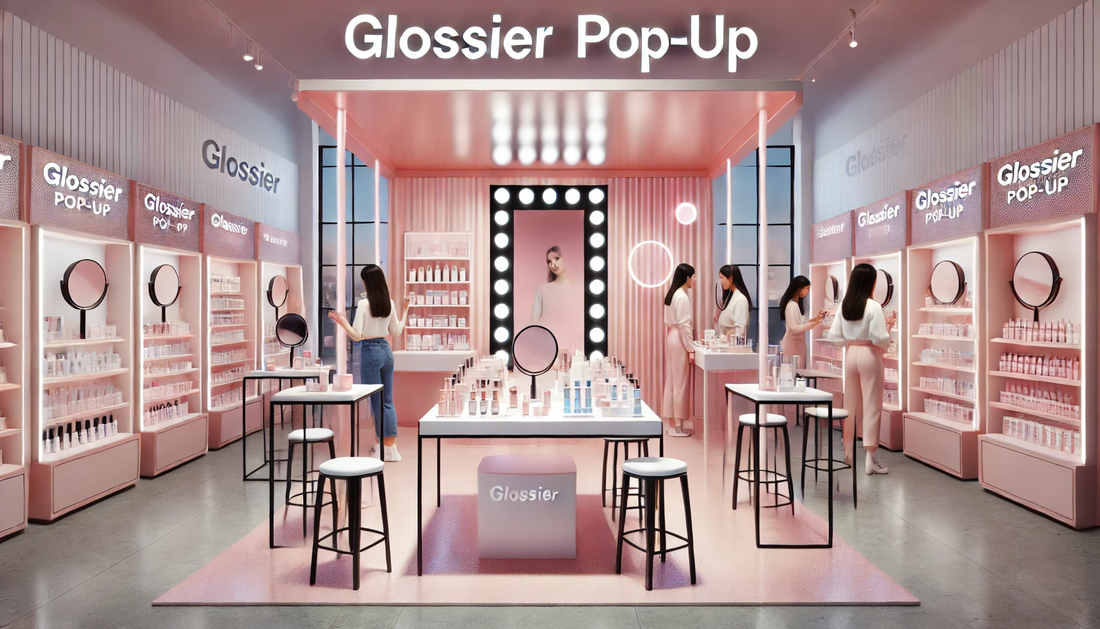In the crowded beauty industry, Glossier has made a name for itself with a strategy that blends exclusivity, community, and innovative marketing—pop-up stores. These limited-time locations have helped elevate Glossier’s visibility and reach, becoming a must-see event in the beauty world. 🚀💄
For startup founders, Glossier's pop-up success offers actionable lessons in brand building and customer engagement. Let’s explore how they used this strategy to their advantage and how your startup can too! 📈
Why Pop-Ups Work: Creating Buzz and Exclusivity
Pop-up stores are temporary retail spaces designed to create excitement, exclusivity, and FOMO (Fear of Missing Out). 😱 By keeping the store open for a limited time, Glossier made their customers feel like they were part of something special and exclusive.
This sense of urgency boosted foot traffic and helped to generate buzz. 📢
For startups, this strategy offers a fantastic way to raise awareness, create excitement, and drive immediate sales. Pop-ups are not just about showcasing your product—they’re about creating an unforgettable experience that leaves your customers wanting more. 🙌
Actionable Takeaway: Choose Locations Strategically
When planning a pop-up, it’s crucial to pick a location that resonates with your target audience. Think about factors like foot traffic, local reputation, and proximity to other brands your customers love. The goal is to surprise and delight while still being relevant and accessible. 🛒
For example, urban hotspots, trendy neighborhoods, or areas with high consumer interest work wonders. The right location can amplify your reach and drive both foot traffic and brand awareness. 📍
Creating Instagrammable Moments: A Key to Social Virality
One of the secrets behind Glossier’s success with pop-ups was their ability to create "Instagrammable" moments. 🎨💖 The stores were designed to look visually appealing, with pastel-colored walls and interactive displays.
Visitors couldn’t resist snapping photos and sharing them on social media, which extended the reach of each pop-up far beyond its physical space.
It wasn’t just about aesthetics—it was about making the experience shareable. Every corner of the store was crafted to create content that was visually striking, which allowed Glossier to leverage social media for brand visibility. 📲
Actionable Takeaway: Design with Social Media in Mind
When planning your pop-up, make sure it’s designed with social media in mind. Create areas where customers are encouraged to take photos and share them using your branded hashtags. Include eye-catching design elements, like a bold logo or tagline, that can easily go viral. 📸💬
Leveraging Data: Gathering Insights for Future Growth
Each Glossier pop-up was a treasure trove of insights. By observing customer behavior, collecting feedback, and analyzing purchase patterns, Glossier was able to refine their product offerings and improve their permanent store experiences. 🧐
Pop-ups offer a low-risk, high-reward opportunity for startups to gather valuable data. Whether it’s testing new products, pricing strategies, or gauging customer interest, pop-ups provide a wealth of information that can guide future growth and refinement. 📉
Actionable Takeaway: Use Pop-Ups for Market Research
Use your pop-up events as an opportunity to gather insights. Consider conducting surveys, collecting feedback forms, or using digital tools to understand customer preferences. This data will help you make informed decisions for future strategies. 📈
Limited-Time Offers: The Power of Scarcity
One of Glossier’s smartest tactics was offering exclusive, limited-edition products at their pop-ups. 🛍️💫 This created a sense of urgency and scarcity, prompting customers to make quick purchase decisions before the opportunity disappeared. It’s a classic strategy that works—scarcity drives demand! 🔥
For startups, limited-time offers are a great way to add excitement around your brand, whether it’s special edition products, discounted services, or exclusive experiences that can only be found at the pop-up. ⏳
Actionable Takeaway: Incorporate Exclusive Products
Use your pop-up as a platform to introduce exclusive products or services. Make sure these offerings are truly unique and use the “limited-time” aspect to create buzz and urgency in your marketing campaigns. ⏰🛒
Community Engagement: Turning Customers into Fans
Glossier didn’t just open pop-ups for the sake of selling products—they used these spaces to build a sense of community. From events to meetups, they created opportunities for customers to engage with the brand and each other. 🤝
For startups, fostering community engagement through your pop-up is essential. It’s not just about the product; it’s about the people. Offering networking opportunities, hosting panel discussions, or running small workshops can turn a basic shopping trip into a lasting, valuable experience. 🎤
Actionable Takeaway: Build a Community Experience
Make your pop-up more than just a store. Add value by hosting workshops, Q&A sessions, or interactive events where people can learn, connect, and get involved with your brand. This builds loyalty and converts casual visitors into dedicated customers. 🏅
Scaling the Pop-Up Strategy: Lessons for Startups
Glossier’s pop-up success didn’t happen by accident—it was the result of careful planning, strategic execution, and a deep understanding of their audience. 💡 By picking the right locations, creating shareable moments, and building a community, they transformed pop-ups from a marketing tactic into a growth engine. 🚀
For startups looking to replicate this strategy, start small. Test your idea in one location before expanding to others. Collect data, tweak your approach, and build momentum. Once you’ve found a formula that works, you can scale to more cities or even explore new formats like mobile pop-ups or brand collaborations. 🌎
Final Thoughts: Pop-Ups as a Launchpad for Growth
Pop-up stores are more than just a marketing gimmick—they’re a powerful tool for brand building, customer engagement, and testing new ideas. For Glossier, pop-ups helped take their brand from a niche beauty company to a global sensation. 🌟
For startups, the key is to approach pop-ups strategically: plan meticulously, create memorable experiences, and use the opportunity to learn and grow. 🧠 With the right approach, your pop-up can be the launchpad your startup needs to reach new heights. 🚀
So go ahead, pop up, stand out, and make your mark in your industry! 💪💫










